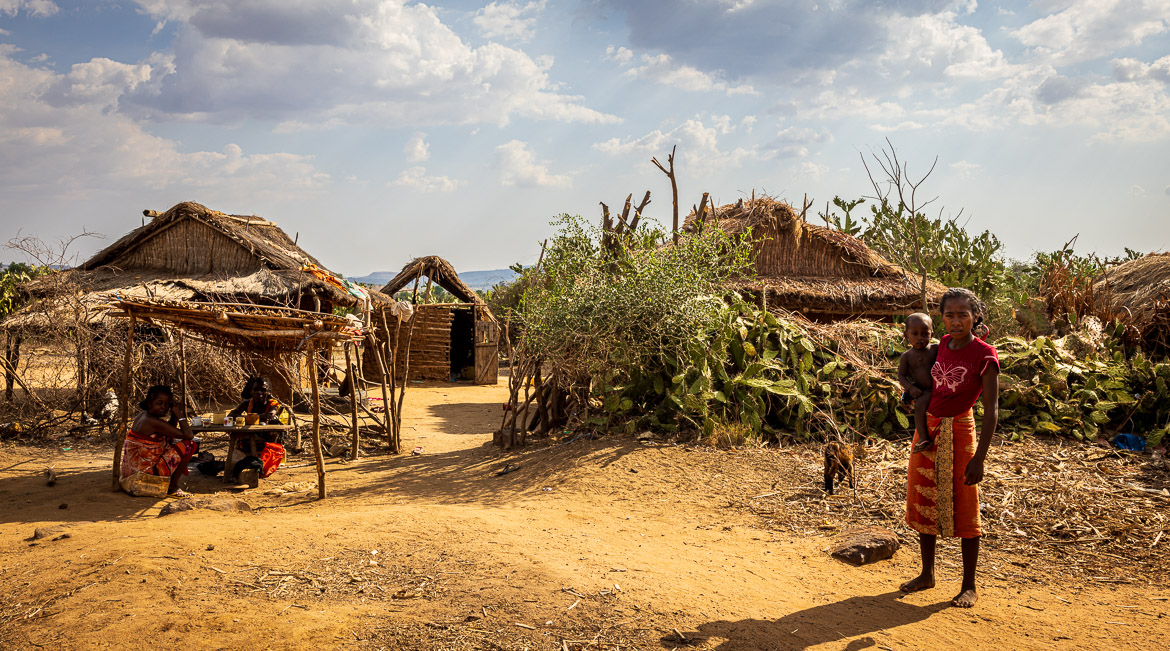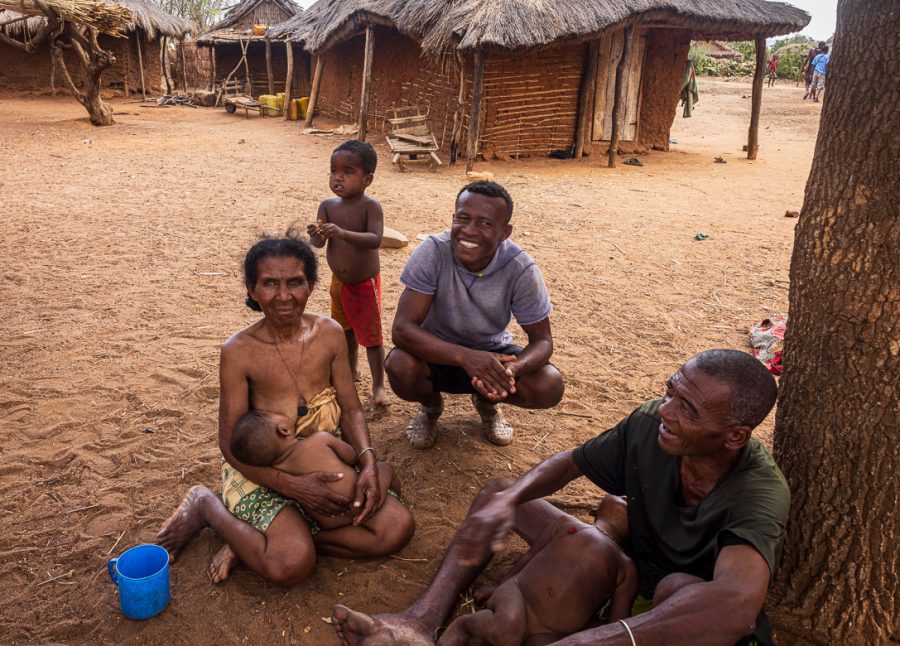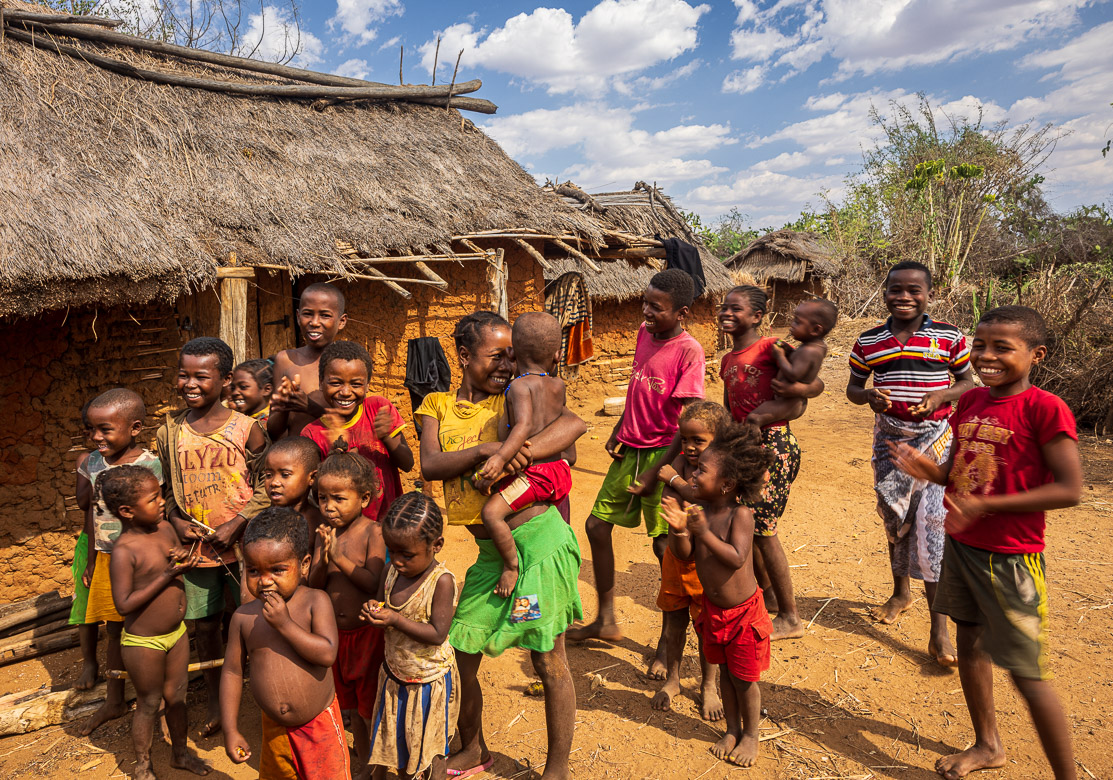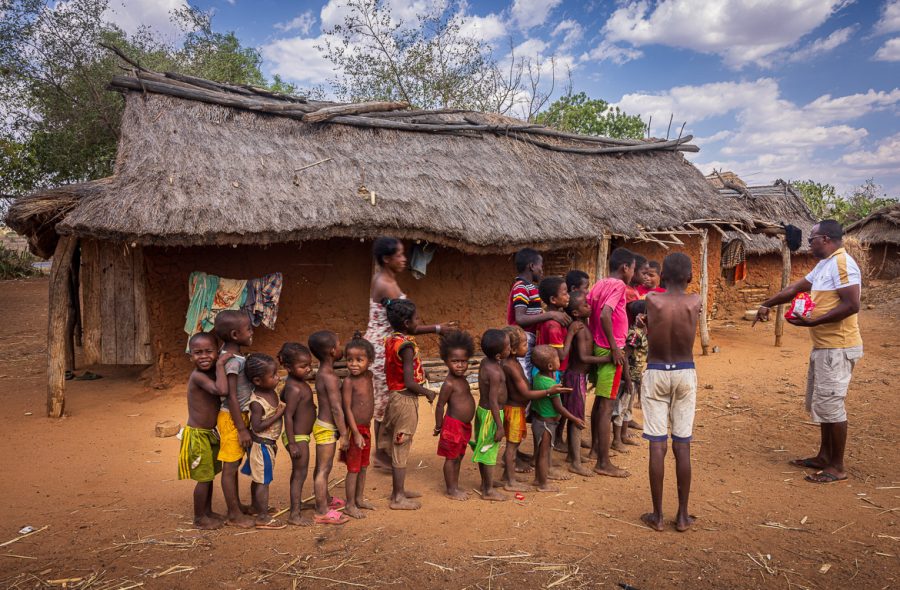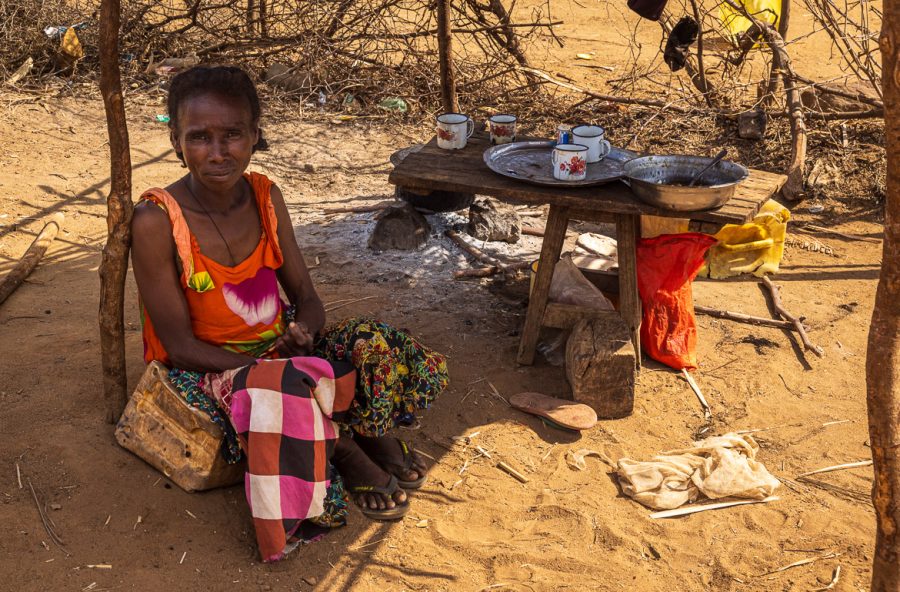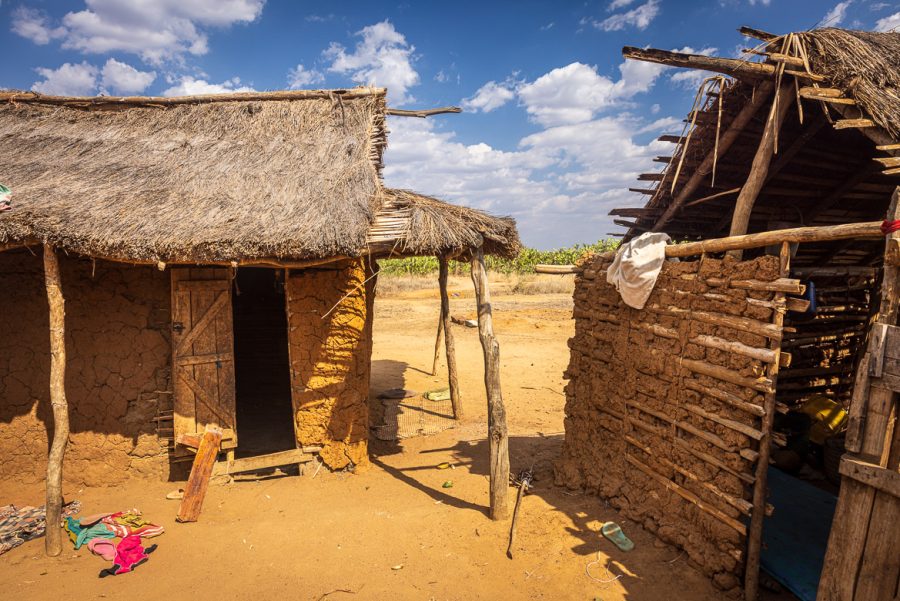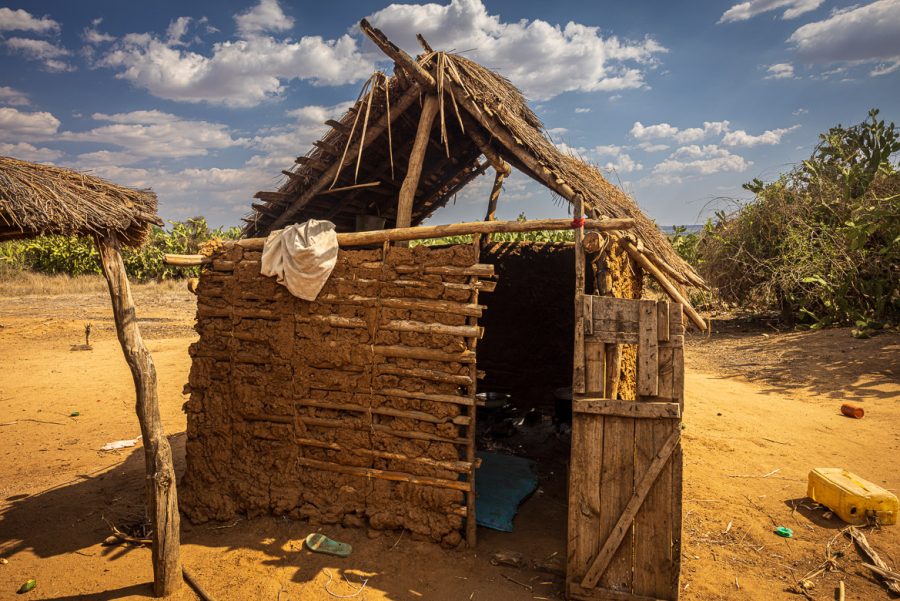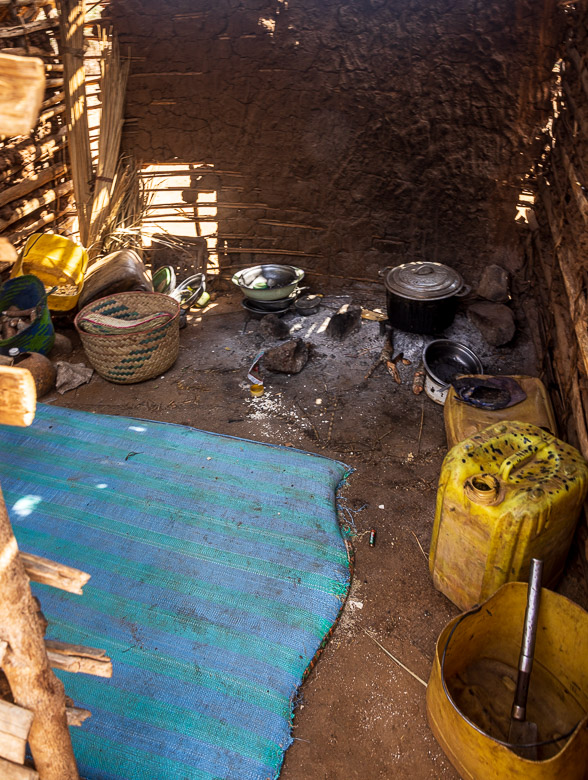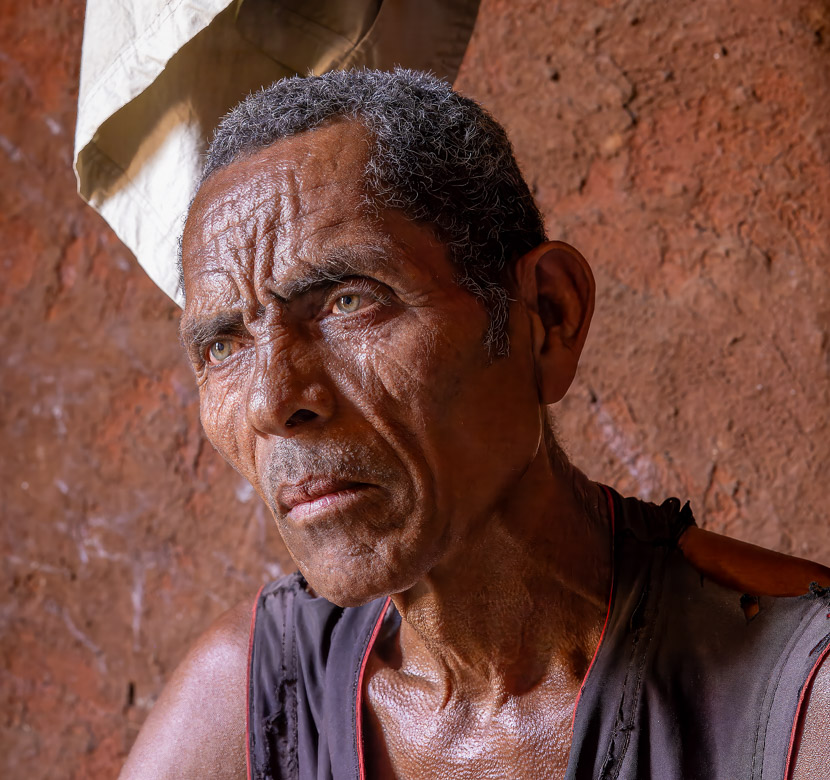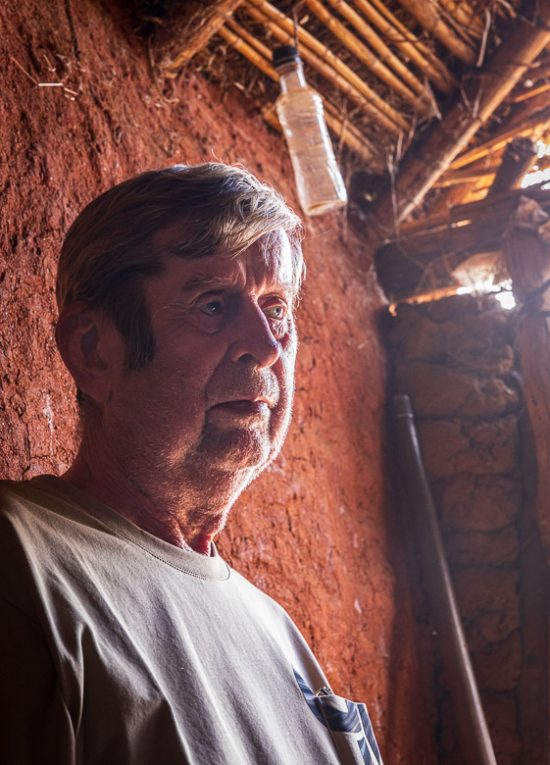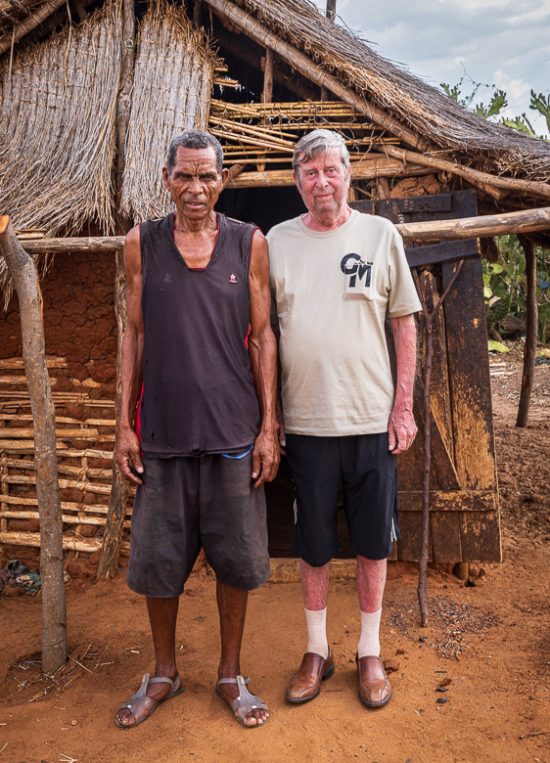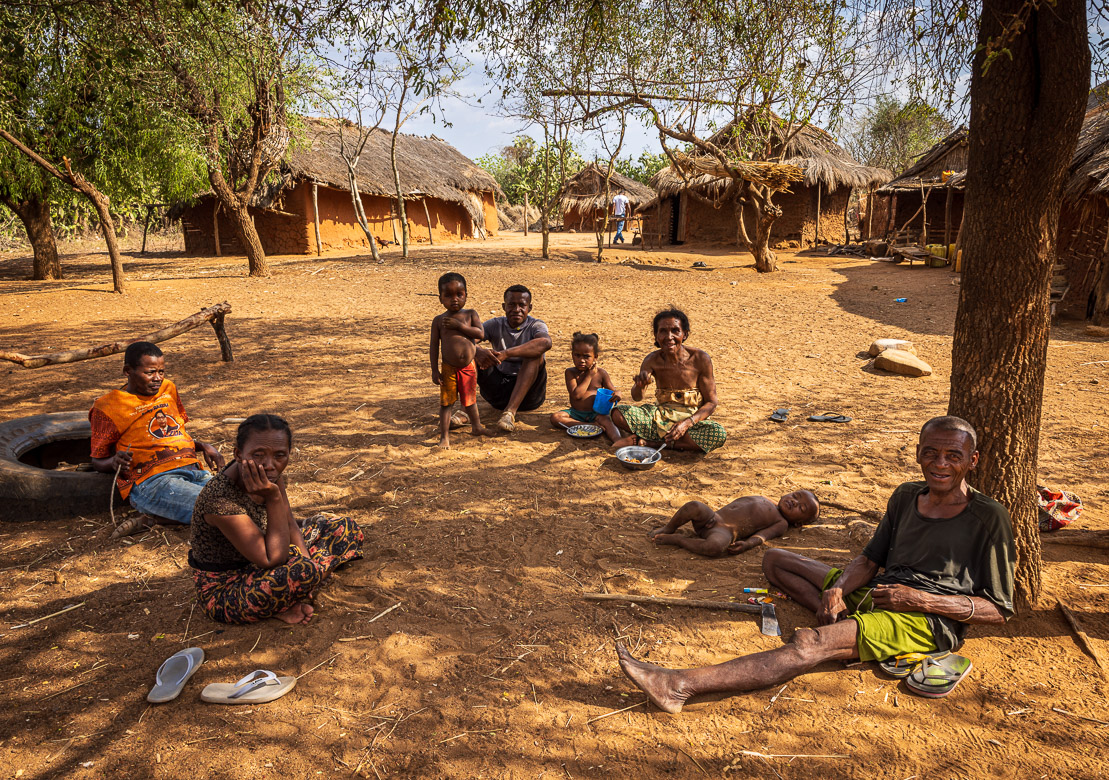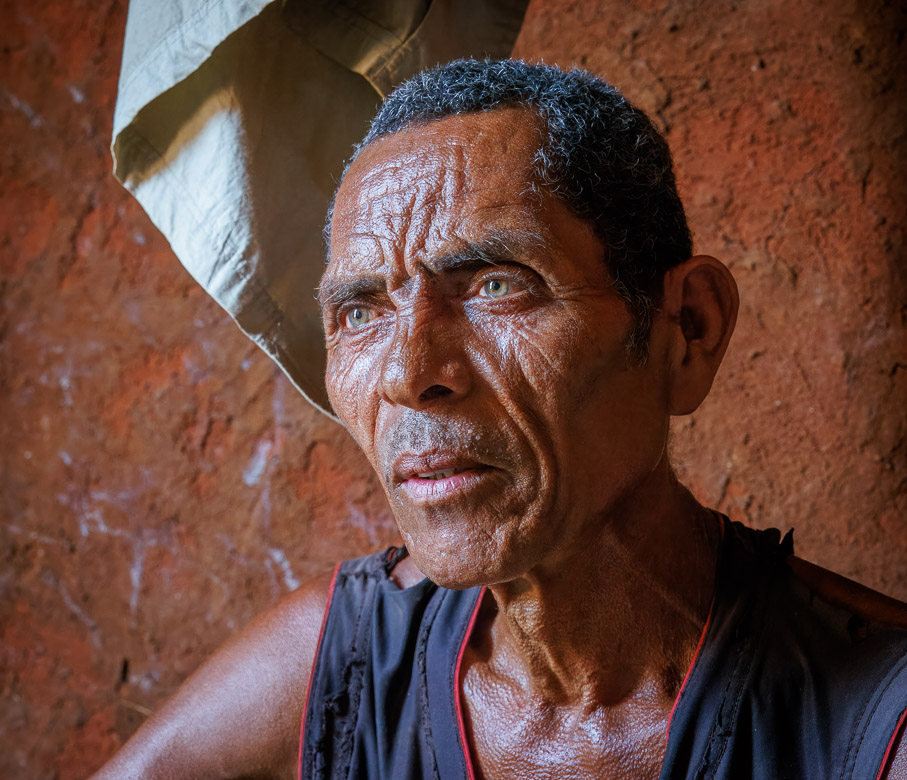
The people that settled in Madagascar came mainly from Austronesia, the present day Indonesia, in the first Millenia AD. Although there are no documented proofs, they must have arrived by outrigger canoes. However, there are (disputed) signs of people visiting much earlier, around 11,000 years ago, but we don’t know from where they came or how long they stayed (if at all).
The reason for the late colonisation of Madagascar is of course the large distances from any other human populated landmass. New Zealand, which is even further away from other land was populated first around 1,250 AD. The majority of the people came from Borneo but was later followed by smaller groups from South Asia and Bantu people from Africa. This has been supported by both genetic, cultural and language analysis, all indicating that Borneo, more than 3,000 miles away to the east, was the origin of the majority of people on the island.
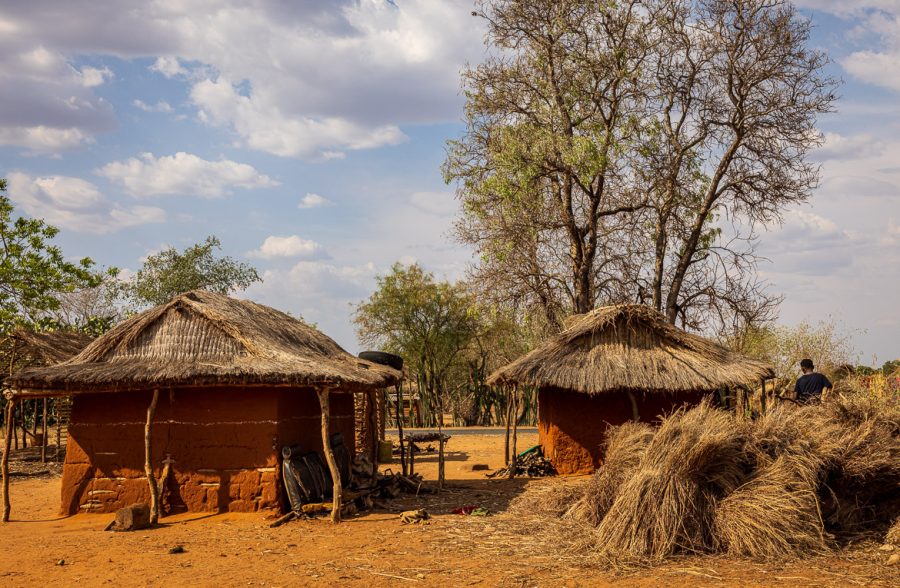
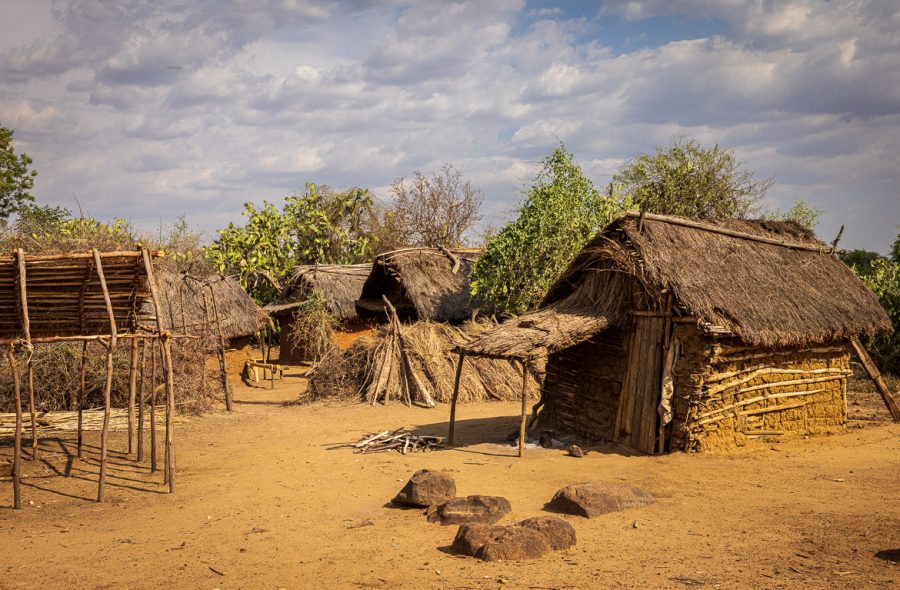
We didn’t have much opportunities to interact with village people as the language was a huge barrier, but our guides were prepared to act as interpreters, and Tore arranged a visit to one village, where we had a chance to sit down with the chief and have a longer conversation with him about the life in the village.
The chief seemed highly intelligent and balanced in his views, but his education was minimal. He could neither write nor read. He ruled his little village together with a group of “elders”. There was only the most rudimental schooling system and no real health care at all in the village. But as long as people were healthy, they had enough food and some clothes.
